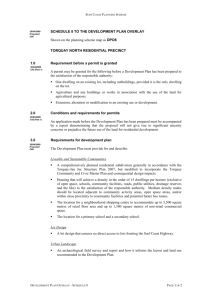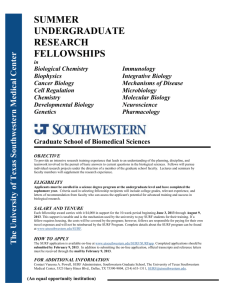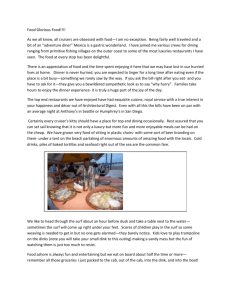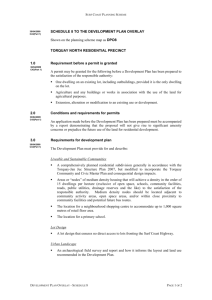File - Year 11 Product Design & Technology
advertisement
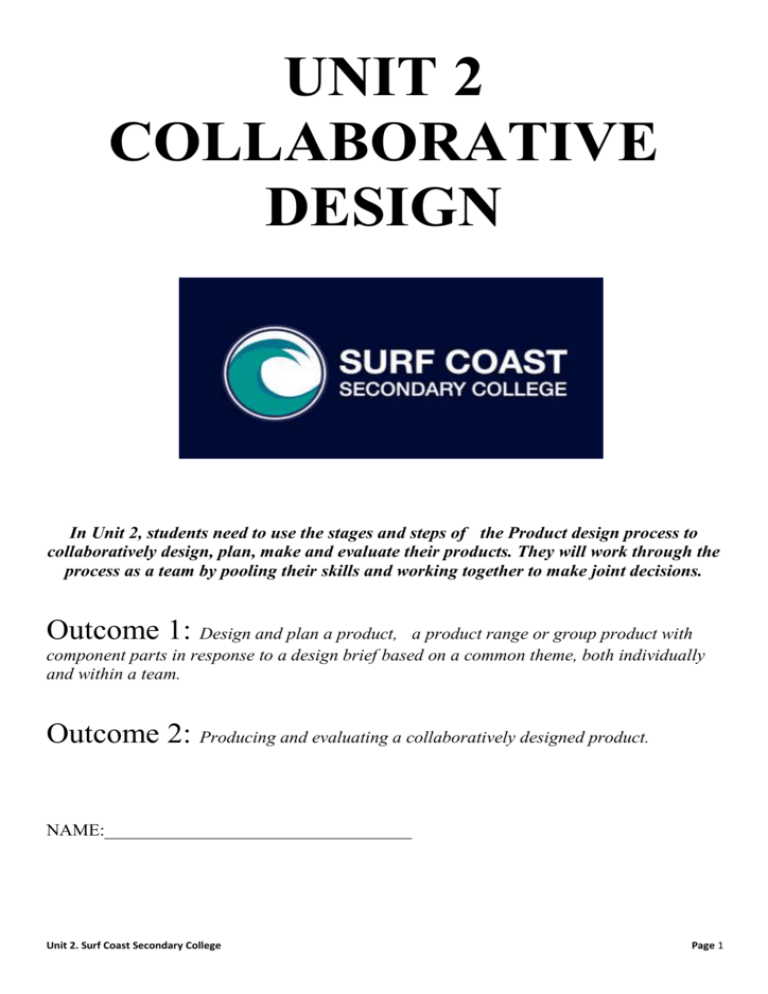
UNIT 2 COLLABORATIVE DESIGN In Unit 2, students need to use the stages and steps of the Product design process to collaboratively design, plan, make and evaluate their products. They will work through the process as a team by pooling their skills and working together to make joint decisions. Outcome 1: Design and plan a product, a product range or group product with component parts in response to a design brief based on a common theme, both individually and within a team. Outcome 2: Producing and evaluating a collaboratively designed product. NAME:__________________________________ Unit 2. Surf Coast Secondary College Page 1 Unit 2 Product design process – Team and Individual work STAGE STEPS TEAM INDIVIDUAL DUE DATE Investigating and defining 1. Identifying client, user, need, problem or opportunity Team investigates and determines the context or thematic aspects of their design situation; and the cultural/historical movement to research. May consider a specific client/user for group product. Individual may investigate their aspect of the team project*. May have an individual client/user for a product within a range 27/6 2. Design Brief Team writes aspects of the brief that are common to all members, defines the context and develops some constraints and considerations. For a group product, the team will need to write a specific and detailed brief Individual may write a brief for their aspect of the team project, may have a specific context, constraints and considerations. An individual brief may not be needed for a group product. 27/6 Team writes group evaluation criteria for the design options and the finished product relevant to aspects developed in the group design brief. Also writes evaluation criteria related to the design planning and production process, focussing on the success of their teamwork. Individual may write relevant evaluation criteria if he/she has written an individual design brief. 27/6 Team works together to identify and allocate relevant areas to be researched, related to a specific movement or style, Human-centred design and Sustainability. Individual/s research allocated areas and share results. Team members share and critique the ideas of the team, and make decisions about appropriate design directions based on their research of a style or movement and around Human-centred design. Individual/s brainstorm and visualise ideas relevant to the brief. Team members may work together to develop design options. Team members share their design option ideas, and together, choose and justify the preferred option/s with reference to the evaluation criteria. Individual/s contribute one to three design options for a group product (or for their component of the product). Alternately, individuals may develop two or more design options for their product within a range or theme. Give feedback to team members on design options. Need to include: • Product design factors, particularly the human- centred design factor and Week 20 Week 20 • Sustainability Style or movement 3. Design option criteria and product evaluation criteria 4. Research Need to include: • primary and secondary Week 20 Each student should write evaluation criteria that assess their contribution to the team. 18/07 first week in term 3 sources of research Design and development (conceptualisation) 5. Visualisations Need to show: • creative and critical thinking 6. Design options Need to show : • creative and critical thinking, as above Justification of the preferred option requires feedback Unit 2. Surf Coast Secondary College 25/07 Page 2 Planning and production 7. Working drawings and/or pattern drafting Some team members may be skilled in technical/detailed drawing and may complete the working drawings of a group product. Detailed working drawings of individual products or components of group products are completed (in an appropriate drawing style). 8. Production plan Team members work/plan together to co-ordinate production stages. For a group product, specific production steps are allocated to team members. All members are involved in some aspects of their risk assessments, and share their results. Material lists may be developed by the group or individual. Team needs to consider production approaches that will result in consistent quality. Individual/s plan specific production work within the team project, whether that is a component of a group product, or an individual product within a range. May consider specific measures they can carry out to ensure their production quality will meet the team standards. Team co-ordinates and regularly discusses the progress of production work. Team members could contribute to a group journal. For group products, individuals carry out allocated production tasks. For individual products, students follow their sequenced plan of production. Need to include: • Sequenced plan of production • Timeline • Materials list and costing • Quality measures • Risk assessment 9. Production • Needs to be documented in a journal or log 17/10 Note: all students write their own journal, but include reference to how production activities relate to team’s project. Evaluation 10. Product evaluation Need to evaluate: • The finished product/s • Influence of historical/ cultural movement or Team members work together to evaluate either their group product (with feedback on each other’s contribution), or share judgements about the individual products of the team, particularly addressing the evaluation criteria written by the team about common elements. Individual evaluates the product using evaluation criteria developed from their own design brief (See Step 3). Team use their team evaluation criteria to assess how well they worked together to design, plan and produce their product/s. Individual uses their individual evaluation criteria to assess their contribution to the work of the team style • Sustainability (social, economic and environmental) of materials and product 11. Production planning and process evaluation Need to evaluate the design, planning and production activities • Teamwork 7/11 • Individual’s contribution Exam Complete an exam on all of the following and show your understanding of the design process. Unit 2. Surf Coast Secondary College 17/11 Page 3 Unit 2. Surf Coast Secondary College Page 4 ASSESSMENT YOU WILL BE MARKED ON INDIVIDUALLY AND ON YOUR CONTRIBUTION TO A TEAM. CAT Description Due date OUTCOME 1 Individual folios that have specific items in common with Monday 18th of their team. August CAT 1- Folio It must have the following 8 items from above 1. 2. 3. 4. 5. 6. 7. 8. OUTCOME 2 CAT 2- Product and journal Week 6 Identifying client, user, need, problem or opportunity Design Brief Design option criteria and product evaluation criteria Research Visualisations Design options Working drawings and/or pattern drafting Production plan Finished product and associated documentation (journal and modifications). See the following page for more details. Wed 22nd of October Week 13 CAT 3- Evaluation report Evaluation report - for the product and for the designing, planning and production activities. See the following page for more details. Wednesday 5th of November week 15 CAT 4 - EXAM Show your understanding of the design brief 17th of November week 17 Unit 2. Surf Coast Secondary College Page 5 CAT 1 Marking sheet Folio assessment sheet for an individual product related to a team theme The final folio must include the following items: Folio Item Responsibility Develop a team scenario and conduct research on a theme Team Scenario Identify or ‘brand’ team and define roles required Team Design brief - simple team brief/scenario and detailed individual brief Team Theme Individual design brief 15 Evaluation criteria Team Individual contribution 15 Research: Human-centred design research (e.g. observations of users, questionnaires of users, personal use), relevant ergonomics, measurements, material requirements, sustainability, historical/cultural style or movement 2-4 pages per individual 6 Visualisations: Thumbnail sketches / idea generation with annotation 2-4 A3 pages per individual 8 Numbered, annotated design options 2-3 per individual 12 Scale model and mock-ups (if relevant) Individual 5 Individual justification 5 Working drawing/s with dimensions Individual drawings 10 Materials testing or information sheet, including any social, economical and environmental issues in relation to the use and processing of the selected material. 1-2 pages per individual 6 Planning: timeline, planned sequence of operations, patterns and templates, cutting list, risk assessment, quality measures Individual contribution 1-2 elements 12 Selection of preferred design option with written justification that includes team members’ comments Total Unit 2. Surf Coast Secondary College Team Feedback Team Marks Individual contribution 4 2 100 Page 6 TEAM DESIGN BRIEF Date: ___________________ Team members: ___________________________________________________________________________________________ _______________________________________________________________________________________________ Team scenario: ____________________________________________________________________________________ _______________________________________________________________________________________________ _______________________________________________________________________________________________ Outline of context (Expand on the scenario to include the need or problem and create a picture of the situation (context), who, what, what for, when, where etc. and whether the need is for a shared project, and how it might be divided into components.) _______________________________________________________________________________________________ _______________________________________________________________________________________________ _______________________________________________________________________________________________ _______________________________________________________________________________________________ _______________________________________________________________________________________________ _______________________________________________________________________________________________ (Include: Sustainability, Human-centred design, Historical/cultural focus) Constraints _______________________________________________________________________________________________ _______________________________________________________________________________________________ _______________________________________________________________________________________________ _______________________________________________________________________________________________ _______________________________________________________________________________________________ _______________________________________________________________________________________________ Considerations _______________________________________________________________________________________________ _______________________________________________________________________________________________ _______________________________________________________________________________________________ . Unit 2. Surf Coast Secondary College Page 7 Individual component brief Date: _________________ Brief description of the component: _______________________________________________________________________________________________ _______________________________________________________________________________________________ _______________________________________________________________________________________________ Specific requirements for this component (constraints and any relevant considerations): _______________________________________________________________________________________________ _______________________________________________________________________________________________ _______________________________________________________________________________________________ _______________________________________________________________________________________________ _______________________________________________________________________________________________ _______________________________________________________________________________________________ Unit 2. Surf Coast Secondary College Page 8 EVALUATION CRITERIA WORKSHEET Set 1: Evaluation criteria for the design options - Add rows as required Criteria questions Team: _________________________________ Team comments or feedback for: This section completed after design options have been developed. Option 1 Option 2 Option 3 /5 /5 /5 /5 /5 /5 /5 /5 /5 /5 /5 /5 Set 2: For the Product - Add rows as required; indicate whether each criterion is written by the team relevant to their team brief, or by the individual for their component or product. Cover – requirements of the design brief/s; Human-centred design, Sustainability, other Product design factors; Historical/cultural period, theme or movement (if relevant). Team or Ind. Evaluation criteria (phrased as a question to judge the finished product) 1 Reason or relevance (to the situation) Checking method for finished product (to see whether it has met the criterion) 2 3 4 5 6 7 Unit 2. Surf Coast Secondary College Page 9 Optional column - name of team member who contributed this criteria Set 3: Evaluation criteria for the Designing, Planning and Production Process Criteria questions that describe expectations for teamwork and individuals’ contribution during the process, and helps to judge the performance of the team and individual. Aim for one question for each stage of the Product design process and one each for the team and individual contribution. Team or individual criteria Investigating and defining (design brief, evaluation criteria and research) Evaluation criteria questions Design and development (visualisations, design options, working drawings) Planning and production (workplan, time-line, materials list, risk assessment, quality measures) Working as a team My individual contribution Unit 2. Surf Coast Secondary College Page 10 RESEARCH Primary and secondary research Students need to show evidence of both in the research they undertake as a team or individually of both primanry and secondary. • Primary – research information that is collected directly (first-hand) by the students, through direct observation, speaking with people involved in or relevant to the situation, data or knowledge gained through tests and trials, etc. Evidence can be in the form of photographs, records of conversations, testing reports, trial examples, etc. • Secondary – research information that is ‘second-hand’, gathered by others, found in texts, interviews, on the internet, etc. This can be in the form of published data (e.g. anthropometric measurements), information researched and written by others, images from texts, magazines or the internet. The sources of this information should be shown with the research. Team works together (Individual/s research allocated areas and share results) to identify and allocate relevant areas to be researched, related to a 1. Specific movement or style 2. Human-centred design 3. Sustainability. Unit 2. Surf Coast Secondary College Page 11 Understanding Human-centred design Words from the parameters column of the Product design factors (page 14 of the VCE Product Design and Technology study design, 2012-2016) that are related to Human-centred design have been isolated and placed in text boxes. Safety Accessibility Universal design Cultural and religious considerations Age Emotional and sensory appeal Social and physical needs Comfort Fashion and trends Anthropometric data Economic status Ergonomic data Work in groups and divide the words/phrases between team members - or work individually. 1. Choose words and search for related images using the Internet or magazines. 2. Cut out the boxed words that you considered and attach onto a large sheet of paper. Paste the relevant images and write words and/or phrases next to, or around each boxed word on a sheet. 3. Develop a phrase that summarises how that parameter can assist in improving the experience of ‘the user’, their well-being and/or quality of life. Questions for each word/phrase: o What is it about? o What sort of information can be gathered? o How will it help? 4. Share this information with the class, either as a presentation or provide copies of your sheet, so that the whole class has an understanding of all the parameters in the Human-centred design factor. 5. As a team (or individually), brainstorm ways these parameters might affect your design brief, your research and your approach to design development (your sketches/visualisations and design options). Unit 2. Surf Coast Secondary College Page 12 Historical and cultural styles or movements research Write a report on a style or movement. This should be included in your team or individual folio with accompanying images from the style or movement. (This work could be used for writing notes while researching) 1. Decide on a style or movement. Explain when and where it predominantly occurred (if possible). ____________________________________________________________________________________ ____________________________________________________________________________________ ____________________________________________________________________________________ ____________________________________________________________________________________ 2. Find at 4-8 images related to your design style or movement (Paste or insert them into a Word document). You can transfer the following questions into the same document or respond here. 3. Research and explain this style and its social background – its main protagonists, artists, musicians or designers, the era, what was happening in the world at that time as far as inventions or technological progress, social upheaval. (You may need more space than this.) ____________________________________________________________________________________ ____________________________________________________________________________________ ____________________________________________________________________________________ ____________________________________________________________________________________ ____________________________________________________________________________________ ____________________________________________________________________________________ ____________________________________________________________________________________ ____________________________________________________________________________________ ____________________________________________________________________________________ ____________________________________________________________________________________ ____________________________________________________________________________________ ____________________________________________________________________________________ 4. Does it have any philosophy or underlying aims? ____________________________________________________________________________________ ____________________________________________________________________________________ ____________________________________________________________________________________ ____________________________________________________________________________________ ____________________________________________________________________________________ ____________________________________________________________________________________ ____________________________________________________________________________________ ____________________________________________________________________________________ 5. List or visually explain the common design features, elements and principles used across the design style or movement. ____________________________________________________________________________________ Unit 2. Surf Coast Secondary College Page 13 ____________________________________________________________________________________ ____________________________________________________________________________________ ____________________________________________________________________________________ ____________________________________________________________________________________ ____________________________________________________________________________________ 6. Annotate your images to highlight those features 7. Explain how this design style or movement could influence your team or individual project – how you could adopt some aspects, features or elements. ____________________________________________________________________________________ ____________________________________________________________________________________ ____________________________________________________________________________________ ____________________________________________________________________________________ ____________________________________________________________________________________ ____________________________________________________________________________________ ____________________________________________________________________________________ ____________________________________________________________________________________ ____________________________________________________________________________________ ____________________________________________________________________________________ 8. How could you use an understanding of this movement or design style or movement’s philosophy in your design work (i.e. in what specific ways might the philosophy influence your design work)? ____________________________________________________________________________________ ____________________________________________________________________________________ ____________________________________________________________________________________ ____________________________________________________________________________________ ____________________________________________________________________________________ ____________________________________________________________________________________ ____________________________________________________________________________________ ____________________________________________________________________________________ ____________________________________________________________________________________ Unit 2. Surf Coast Secondary College Page 14 Social, Economic and Environmental issues You need to research factors around sustainability to assess the impact of your product design and the selection of materials and processes. Understanding sustainability involves research of the social, economic and environmental issues involved. Social This refers to how humans behave on their own and as a member of society. Questions for to ask: How might the creation of this product affect human behaviour? What effects might the product have on communities and how they relate to each other? Will this product contribute to a person’s life in a positive way? Will it encourage the user to become more isolated? Does the product add status to a person’s image? Are the materials sourced fairly, i.e. is there unfair treatment or jeopardising of the health of workers or communities where the material originates from? Is the product manufactured with fair treatment of workers and surrounding communities? Other social factors are included on page 49 of the Product Design and Technology VCE Study Design2012-2016. Economic This refers to the cost of the product both long term and short term, the profits to be made and the cost of the product to consumers. While the manufacturing of products ultimately needs to create profits to survive, the ethics of how these profits are made, where they go to, and whether the benefits of products are justly shared, are often considered, when discussing economic sustainability. Questions for to ask Who gains financially from the sourcing of materials, production and use of the product? Are workers paid fairly? Are the profits taken out of the countries where materials are sourced and products are made because of the global nature of multinational corporations? Can only affluent members of society afford this product? Will it contribute to a bigger divide between the ‘haves’ and the ‘have-nots’? Are the materials used creating economic hardship or prosperity for those involved? Environmental Environmental sustainability refers to the impact of our behaviour on the natural world around us. In broad terms, we consider whether our human impacts make permanent changes to natural systems (e.g. plant , animal, weather, etc., and whether they can recover and replenish our use of resources. Questions for to ask Is the environment considered in the manufacture of the product? What are the negative ecological effects and impacts of the product and its materials? Are there any positive consequences on the environment? How could the product’s impact on the environment be improved? Consider the issues around: Repurposing, recycling, re-using and reducing The virtues of long lasting quality products compared with cheap and less well-made designs The impact of purchasing new products to replace others Care and maintenance of products - how it can promote a longer life and less need to replace them Products that fulfil several functions, which reduces the need for a number of products. Unit 2. Surf Coast Secondary College Page 15 To improve the sustainability When trying to make an improvement in, or assess the sustainability of their products: The materials you choose: - Are they renewable, recycled or recyclable? - Are they sourced and processed locally (reducing fossil fuel use)? • Can do more in-depth research on: - Are the materials processed with toxic/non-toxic chemicals? - Does their processing create minimal pollution? - Use of water and energy during processing - Were workers treated fairly – health, pay? (often difficult to find out, possible to make generalisations about corporate behaviour and legislation in the country of origin) • How to make the product durable The strength and quality of design, materials and construction • How to minimise waste • The possibilities of making the product multifunctional • Considering how the product is maintained (e.g. polished, washed, dry cleaned, etc.), reducing the impacts of these processes and how to inform the user/owner with care instructions that outline environmentally friendly methods • How to design the product so that it can be reused, recycled at the end of its life Identifying material Limiting the number of materials Non-permanent methods of joining materials (for easy disassembly). Unit 2. Surf Coast Secondary College Page 16 THEME MOOD BOARD Create a mood board to define the team’s theme or product style. SUGGESTIONS FOR BEING CREATIVE Use the list below to help develop creativity and group discussion. paring down to simplest function adding extra ‘secondary’ functions improving basic functions enlarging or reducing functional features emphasising or exaggerating functional features Function changing expected appearance of this type of product (e.g. designing a chair that does not resemble a normal chair) imagining a child using your intended product imagining an elderly person using your intended product Shapes adding a concave or convex curve to the perimeter of the shape adding or subtracting a different shape to the exterior of the main shape taking a portion away using a silhouette only using the negative shape, i.e. create the shape by the background repeating shapes using shapes from nature but paring down to a simpler form using shapes symmetrically or asymmetrically Form similar methods as applied to shapes Lines using lines to give the effect of visual weight having patterns of lines in particular sections adding smooth flowing lines adding jagged or zig-zagged lines emphasising parts or partitions varying the thickness of lines using interrupted or dashed lines Colour having variations of one colour only – mono using a pale colour with very small amounts of a darker, complementary or contrasting colour using multi-coloured stripes using colour with black and white contrasts using bright primary colours contrasting natural material colours with applied colour (painted, dyed, stained) Texture using unexpected textures contrasting textures (e.g. shiny with matt, smooth with furry, etc.) Proportion dividing sections of a shape with line to change the visual proportions designing objects using odd, unexpected proportions changing the proportion of parts, e.g. enlarging the handles, making the body wider at one end Patterns creating patterns using repeating lines, colours, shape or textures using a simple decorative or functional feature in a repeated way repeating colours; the use of stripes, checks and tartans Unit 2. Surf Coast Secondary College Page 17 VISUALISATIONS Need to show: creative and critical thinking Team members share and critique the ideas of the team, and make decisions about appropriate design directions based on their research of a style or movement and around Human-centred design. Individual/s brainstorm and visualise ideas relevant to the brief. Things to think about: How will this suit the user needs and wants? What aspects work well? What can be further improved to work better? Can I push this idea even further and still make it work well? Have I pushed it too far? Can I combine ideas from more than one sketch/ model? Is this the best choice of materials? What else can I use? What do other people think? How can I incorporate their ideas? DESIGN OPTIONS Design options need to be: At least A4 size minimum per option (teacher to stipulate expected size) Viable solutions for the team’s design brief Numbered clearly Have annotations (could be related to functional features, design elements and principles decided by the team, construction techniques, materials to be used or any other aspects that are outlined in the team- developed design brief or evaluation criteria). You must justify the preferred option WORKING DRAWINGS Complete working drawings by hand or use computer-drawing methods (CAD, Photoshop/Illustrator, etc.). Unit 2. Surf Coast Secondary College Page 18 DESIGN OPTIONS Need to show : • creative and critical thinking, as above PRODUCTION PLAN This is the finale part of your folio that needs to have to following in detail. • Sequenced plan of production • Timeline • Materials list and costing • Quality measures • Risk assessment Unit 2. Surf Coast Secondary College Page 19 Teamwork evaluation report 1. How would you rate your contribution to the team project, on the whole? (CIRCLE or place a cross) POOR 1 2 3 4 5 EXCELLENT Explain your major tasks ________________________________________________________________________________________________________ _ 2. How would you rate your contribution to the team design brief and evaluation criteria? POOR 1 2 3 4 5 EXCELLENT Explain your input ________________________________________________________________________________________________________ _ 3. How would you rate your contribution to the research? POOR 1 2 3 4 5 EXCELLENT What areas did you research? What was the quality of your research (i.e. relevance and usefulness)? ________________________________________________________________________________________________________ _ 4. How would you rate your contribution to designing and providing feedback on designs? POOR 1 2 3 4 5 EXCELLENT Explain your input ________________________________________________________________________________________________________ _ 5. How would you rate your contribution to the team’s production planning? POOR 1 2 3 4 5 EXCELLENT What aspects of production planning were you involved with? ________________________________________________________________________________________________________ _ 6. How would you rate your contribution to production? POOR 1 2 3 4 5 EXCELLENT What processes did you complete? ________________________________________________________________________________________________________ _ Unit 2. Surf Coast Secondary College Page 20
